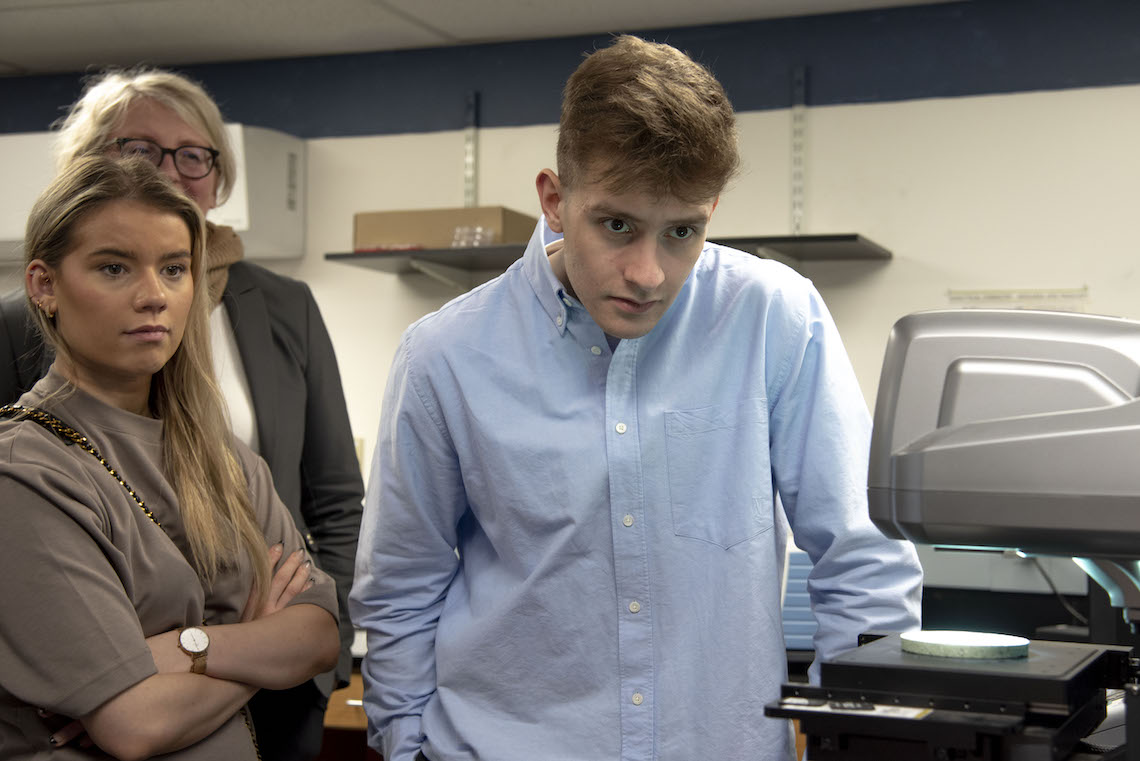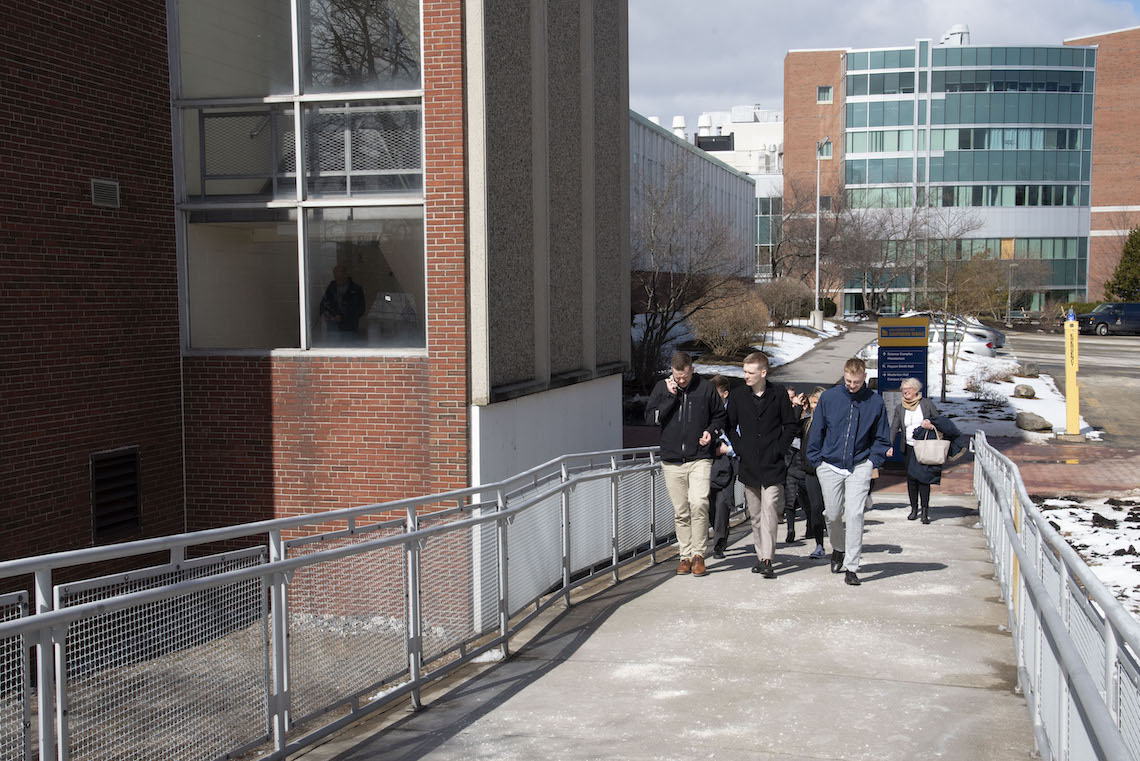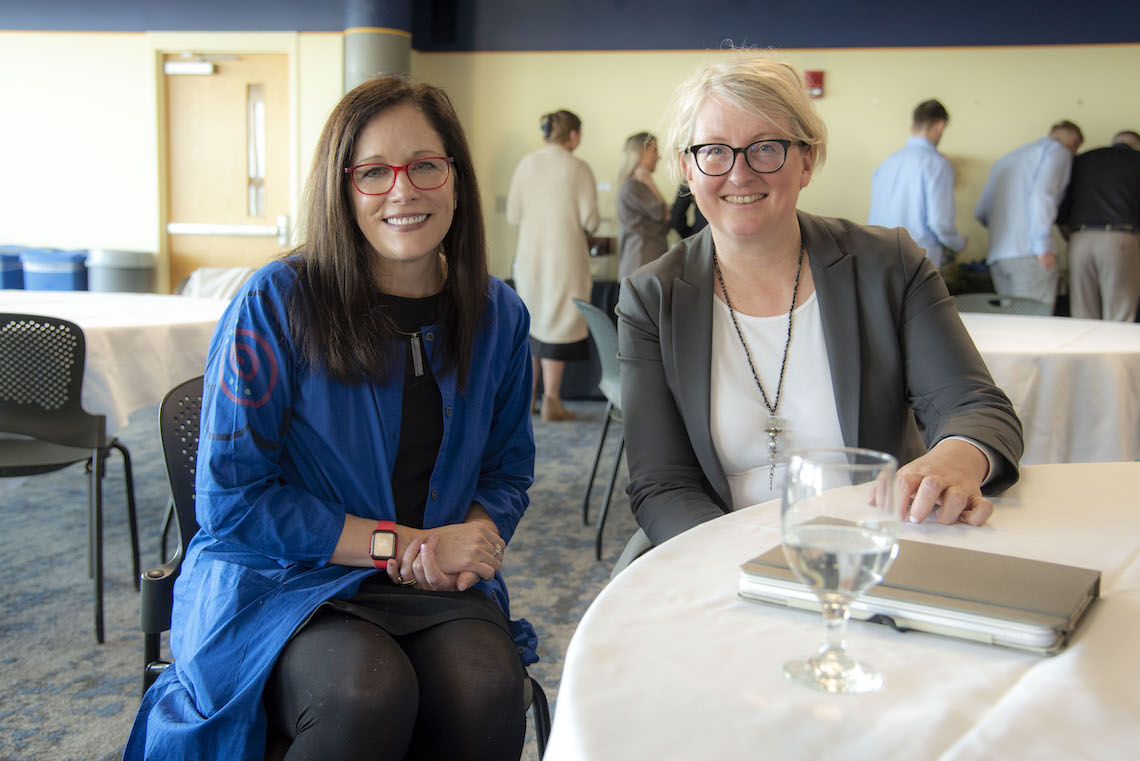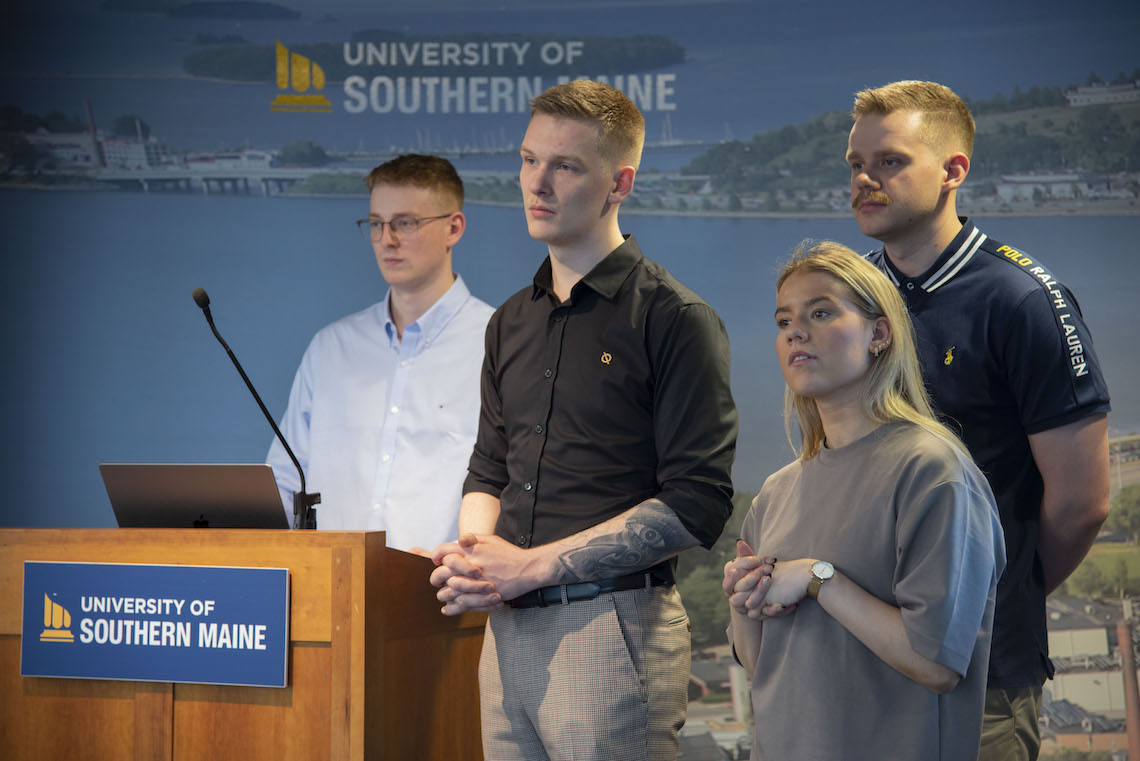
The Portland Campus of the University of Southern Maine doubled as a spring break hot spot for college students from Iceland.
They didn’t come here to party. They came to gain new insights into their fields of study by observing how their overseas counterparts make use of the facilities and tools that USM provides.
The delegation consisted of five students from Reykjavík University (RU). The trip on March 15 was their prize for working together to win an engineering competition. Jakob Freyr specializes in mechanical engineering. His reaction to the Portland Campus could just as easily have come from a tourist in Times Square.
“Everything is just larger,” Freyr said.
USM is a mid-size university by American standards. Enrollment numbers include the usual undergraduate and graduate students, as well as high school students involved in early college programs, and University of Maine Law School students who share space on campus. Collectively, they add up to a total enrollment of more than 7,500 students.
Enrollment at Reykjavík University is about 3,500 students. That is big enough to make it the largest private university in Iceland. But size is relative. Iceland has a national population of more than 387,000. Maine is more than three times larger with a state population exceeding 1.36 million.

USM’s campus population was largely absent when Freyr and his teammates arrived since their visit coincided with spring vacation week. The empty classrooms gave the Icelanders free rein to explore without fear of disturbing lessons and research. Their tour focused mostly on the Science Building.
Dr. So Young Han welcomed the delegation into the Maker Innovation Studio (MIST Lab). The 3D printers attracted a lot of interest and Dr. Han was happy to answer questions about their capabilities.
A few steps down the hall brought the group into the Composite Engineering Research Laboratory (CERL), where they were greeted by Dr. Asheesh Ravikumar Lanba. His demonstration offered a glimpse into a range of equipment with an estimated value of about $1.5 million.
Also falling under Lanba’s supervision is the LATscan equipment, which uses lasers to create super high-resolution scans in three dimensions. The crowd leaned into the screen as Lanba pulled up one of the images.
The pace of the tour picked up as time wound down. Dr. Jeremy Qualls, Dean of the College of Science, Technology, and Health (CSTH), barely broke stride as he guided the visitors through the biomedical labs and a simulated hospital setting currently under construction.

The Icelanders showed no signs of fatigue despite the hectic schedule they’d been keeping. The previous day, they toured Portland’s working waterfront. Their time was split between the offices of the Icelandic shipping company Eimskip and the New England Ocean Cluster, a business incubator which also has roots in Iceland.
“I’m always shocked about the connections you’re always making around the world and the connections our schools have together,” said Freyr.
The link between USM and RU began with a reciprocal study abroad program that launched in 2016. Its success led to a formal partnership the following year. The two schools pledged to expand their cooperation with regular visits to each other’s campuses.
“I hope that we can keep developing it. We have had some student exchanges. I hope we can increase those,” said Dr. Ragnhildur Helgadóttir, President of Reykjavík University. “And I look forward to talking with your president about furthering also cooperation in research and in strategic discussions, too.”
Helgadóttir wasted no time in building that relationship. She made the trip to Portland with her students and, after the campus tour, introduced herself to USM President Jacqueline Edmondson over lunch. It was their first meeting in their relatively young presidencies. Helgadóttir assumed leadership in September 2021, and Edmondson started in July 2022.

Helgadóttir’s students supplied the lunchtime entertainment. They recreated the presentation that won them the trip to Maine. An industrial fishing company sponsored the competition in order to find new markets for its herring catch. Herring is an oily fish that isn’t often found on menus across the United States.
Some of the rejected uses for the herring included dog food and detergent. The students finally hit upon their winning idea to isolate key nutrients like Omega-3 oil. It could be consumed as a supplement in pill form, or mixed as a powder into protein drinks. Seeing the potential for profits in the U.S. health care economy, the company found its winner.
President Edmondson was also impressed by the presentation and eager for USM students to return the favor.
“I think the partnerships we have with other institutions are incredibly important to our future,” said Edmondson. “I’m really excited about the opportunity to work more closely with Reykjavik University with student exchanges, faculty exchanges, and research opportunities.”

